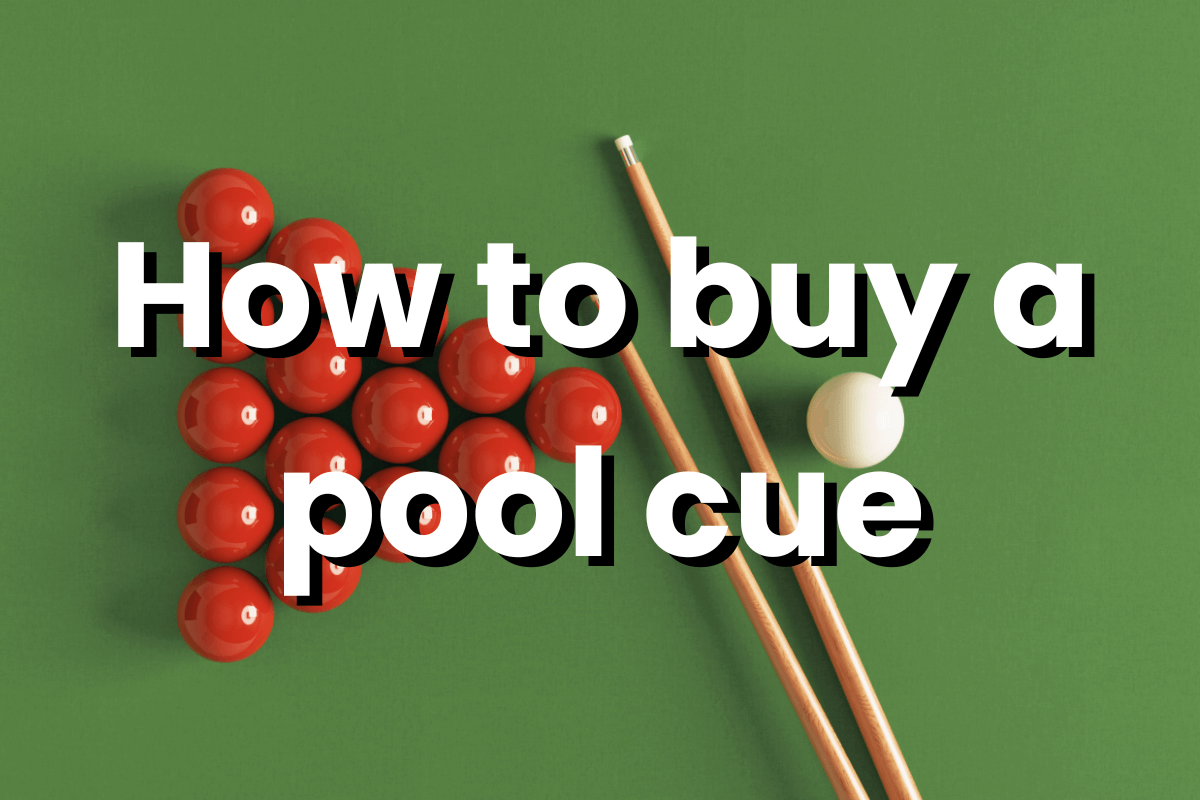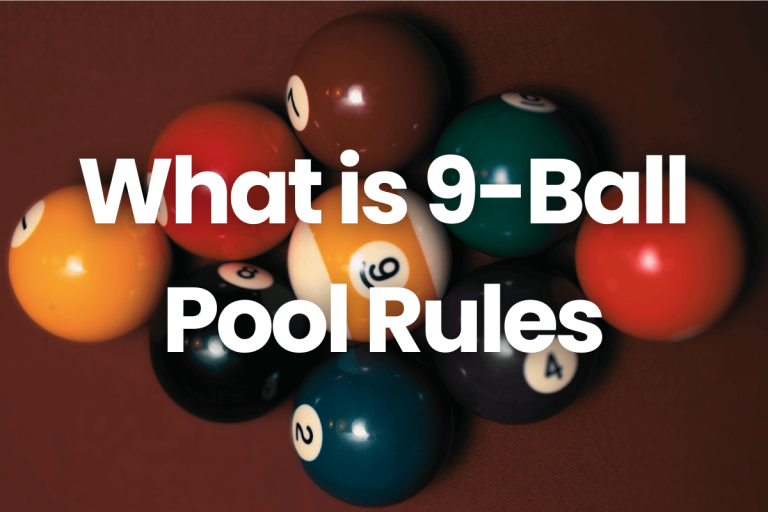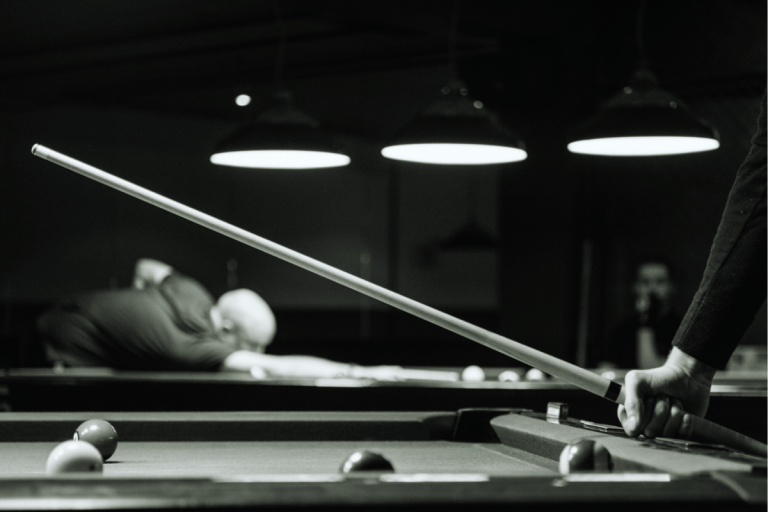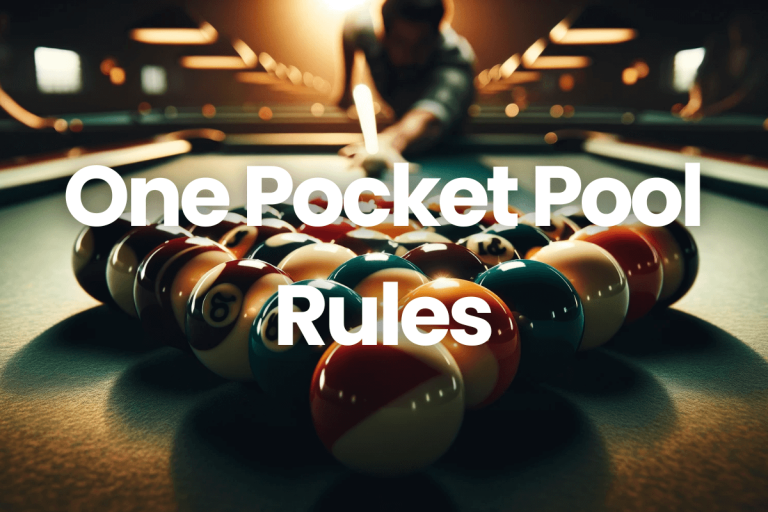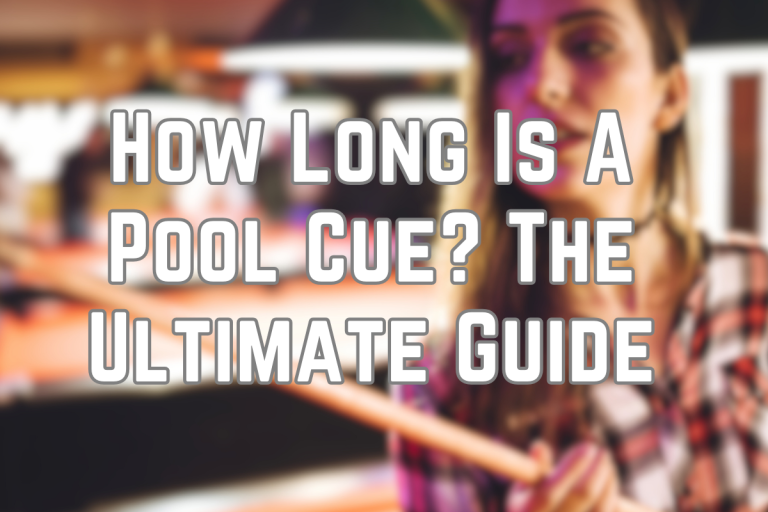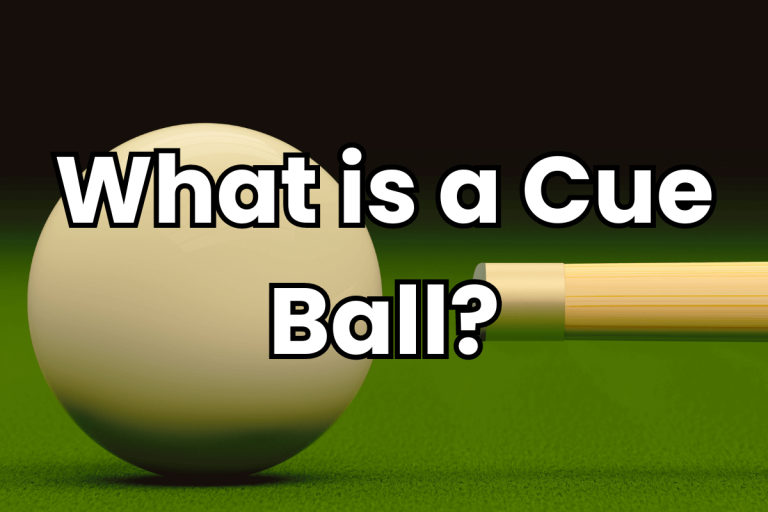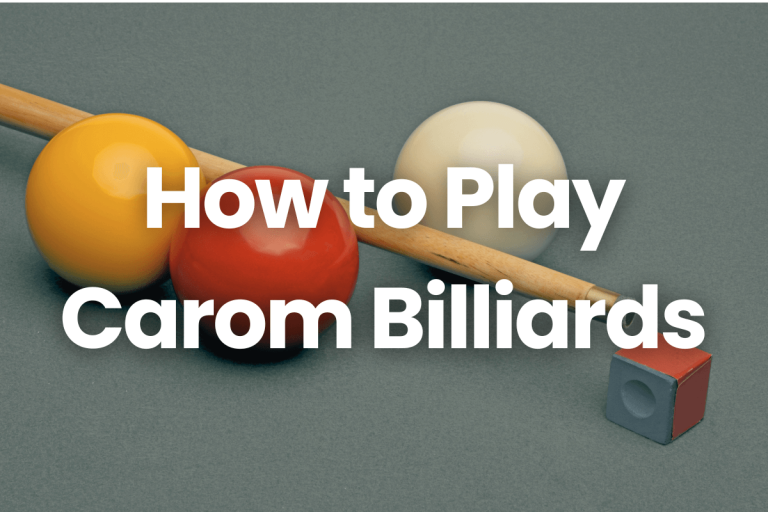How to buy a pool cue | Pool cue buying guide (2024)
Embarking on how to buy a pool cue is crucial for any billiards enthusiast. The right cue is a game-changer, enhancing precision and comfort. This guide provides a deep dive into selecting your ideal pool cue, offering detailed insights and practical advice. With each section, you’ll gain clarity and confidence in making a choice that resonates with your playing style. Step into this guide with assurance; it’s your roadmap to making an informed, impactful decision in the world of pool cues.
Understanding Pool Cues
A pool cue, an essential tool for any billiards player, is more than just a stick used to strike the cue ball. It’s an extension of the player’s arm, a precision instrument that translates intention into action on the pool table. Typically ranging from 57 to 58 inches in length, a pool cue consists of a tapered shaft that allows players to grip and control their shots with finesse and a tip that impacts the cue ball with precision.
The role of a pool cue in the game is multifaceted. It’s not only used for making shots but also for applying various spins and strokes, influencing the cue ball’s trajectory and interaction with other balls. A quality pool cue can significantly enhance a player’s accuracy, consistency, and overall performance. Whether executing a powerful break shot, a delicate touch shot, or a strategic spin, the pool cue is the player’s primary instrument in showcasing skill, strategy, and prowess on the billiards table.
Types of Pool Cues
Pool cues come in various types, each designed for specific aspects of the game. Understanding the differences can help players choose the right cue for their style of play and the particular situation on the pool table.
Playing Cues
Purpose: These are the most common type of cues, used for the majority of shots in a game.
Features: Playing cues prioritize balance and finesse, offering a smooth stroke for consistent play.
Break Cues
Purpose: Break Cue Specifically designed for the break shot, the initial shot that disperses the racked balls.
Features: Typically heavier and sturdier, break cues transfer more power to the cue ball, facilitating a more effective and forceful break.
Jump Cues
Purpose: Jump Cue Used to perform jump shots, allowing the cue ball to leap over an obstructing ball.
Features: Jump cues are shorter and lighter, with a harder tip to impart the necessary force and elevation for jump shots.
Cue Construction
The construction of a pool cue also varies, offering players choices based on their preferences, skill levels, and convenience.
One-Piece Cues
Pros: Generally more affordable and durable due to their simple construction.
Cons: Less customizable and not as convenient to transport.
Two-Piece Cues
Pros: Easy to transport as they can be disassembled. Offer a good balance of performance and convenience, and they’re widely used by both amateurs and professionals.
Cons: The joint can affect the cue’s feel and balance, though quality two-piece cues minimize this issue.
Three-Piece Cues
Pros: Include an additional butt extension, offering more versatility in length and balance. Ideal for players who want the flexibility to adjust their cue’s length based on their shot or stance.
Cons: Can be more expensive and may require more maintenance to ensure all connections remain tight and aligned.
How to buy a pool cue?
Key Features to Consider When Buying a Pool Cue
When selecting a pool cue, several key features need to be considered to ensure the cue aligns with your playing style and preferences. These features directly influence your control, comfort, and overall performance.
Types of Cue Length
Ideal Length: Typically ranges from 57 to 58 inches. However, shorter or longer cues may be more suitable based on a player’s height and arm length. Taller players or those with longer arms might prefer a longer cue for a more natural stance and stroke.
Impact on Play: The right length helps in maintaining a proper and comfortable stance, ensuring better control and accuracy.
Types of Cue Weight
Weight Range: Pool cues usually weigh between 17 and 21 ounces. Some are heavy cues that weigh between 22 and 25 ounces and are used for jump and break. Players often choose based on personal comfort, with most preferring cues around 19 ounces.
Impact on Play: The weight of the cue influences the force and speed of the cue ball. Heavier cues might offer more power but can be harder to control for precise shots, while lighter cues offer better control but may require more effort for forceful shots like breaks.
Types of Cue Tip
Soft Tips: Provide a better grip on the cue ball, allowing for more spin (English) but may wear down more quickly and require more maintenance.
Medium Tips: Offer a balance between control and durability, making them a popular choice among players.
Hard Tips: Require less maintenance and are more durable, but offer less grip on the cue ball, making them less ideal for shots requiring a lot of spins.
Impact on Play: The hardness of the tip affects control, spin, and overall feel. Your choice should align with your play style and preference for shot types.
Types of Wraps
Irish Linen: Offers a classic look and a good grip, absorbs moisture well, providing a comfortable and stable hold.
Leather: Provides a soft, luxurious feel and a solid grip. Tends to be more durable than linen.
None (Wrapless): Some prefer the direct feel of the wood for a more natural grip, especially in drier climates where moisture isn’t as much of an issue.
Comfort Factors: The wrap should feel comfortable in your hands, not impeding your stroke while providing a stable grip. Personal preference plays a significant role here, as the texture and feel of the wrap contribute to your overall comfort and control.
Material and Construction of Pool Cues
The material and construction of a pool cue significantly influence its durability, playability, and overall feel. Here’s a breakdown of the most common materials used in pool cue construction and how they impact the cue’s performance.
Wood
Characteristics: Traditional and most common material for pool cues, offering a natural feel and a wide range of flexibility and weights.
Types: Maple and ash are popular, with maple being preferred for its stiffness and durability, and ash for its flexibility and tactile feel.
Impact: Wood cues provide a classic, balanced feel and are preferred for their ability to deliver a wide range of shots with precision. However, they require more maintenance to protect against warping and moisture.
Fiberglass and Graphite
Characteristics: These synthetic materials are known for their durability and resistance to warping. They are often used to coat wooden cues for added protection.
Impact: Fiberglass and graphite cues offer consistency in play and are low maintenance. However, some players find them less responsive compared to wood cues, impacting the feel and feedback during shots.
Carbon Fiber
Characteristics: A newer material in cue construction, known for its high strength-to-weight ratio and resistance to bending and warping.
Impact: Carbon fiber cues are gaining popularity for their durability and consistent performance. They offer a smooth, vibration-dampened feel, which can be a significant advantage in precision shots. However, they tend to be more expensive.
Importance of Cue Construction
Durability: The choice of material affects the cue’s resilience to daily wear and tear, including resistance to warping, bending, and moisture damage.
Playability: Construction impacts the cue’s balance, weight distribution, and overall feel. A well-constructed cue enhances shot accuracy, control, and consistency.
Maintenance: Different materials require different levels of care. For example, wood may require regular treatment to prevent warping, while synthetic materials like fiberglass and carbon fiber are more resistant to environmental factors.
Where to Buy Pool Cues?
Finding the right place to buy a pool cue is just as important as choosing the cue itself. Whether you prefer browsing in-store or shopping online, each option offers its advantages. Here are some recommended places to buy pool cues and tips for making your purchase.
Specialty Stores
Pros: Physical specialty stores allow you to feel the cue’s weight, balance, and texture firsthand. Staff are often knowledgeable and can provide personalized advice.
Cons: Selection might be limited compared to online options, and prices might be higher due to overhead costs.
Online Retailers
Pros: Online stores offer a wide variety of choices, often at competitive prices. Reviews and ratings can guide you toward reliable and high-quality cues.
Cons: You can’t physically inspect or test the cue before purchasing, and returning products can be a hassle.
Tips for Buying Online
Research: Read product descriptions, reviews, and ratings carefully. Look for cues from reputable brands and sellers with positive feedback.
Understand Return Policies: Ensure the seller has a reasonable return policy in case the cue doesn’t meet your expectations.
Verify Authenticity: Purchase from official brand stores or authorized dealers to avoid counterfeit products.
Consult Experts: Consider seeking advice from online forums or communities before making your purchase.
Tips for Buying In-Store
Test the Cue: If possible, test the cue on a table in the store. Pay attention to the cue’s balance, weight, and how it feels during shots.
Inspect for Quality: Check for straightness, smoothness of the shaft, and overall construction quality.
Ask Questions: Use the opportunity to ask the staff about the cue’s materials, maintenance, and any warranties or guarantees.
Compare Prices: While in-store prices might be higher, consider the added value of personal service and the chance to try before you buy.
Maintenance and Care for Your Pool Cue
Proper maintenance is essential for preserving the life and performance of your pool cue. Regular care not only keeps your cue looking great but also ensures it plays well for years to come. Here are some basic tips for maintaining your pool cue, along with insights into how these practices can extend its lifespan and maintain its playability.
Cleaning
- Shaft: Wipe the shaft regularly with a soft, dry cloth to remove oils and chalk residue. For deeper cleaning, use a cue shaft cleaner or a very lightly dampened cloth, followed by a dry cloth.
- Tip: Gently brush the tip to remove chalk buildup. Avoid using abrasive materials that can damage the tip’s surface.
- Butt: Clean the butt of the cue with a cloth. If it has a wrap, follow the specific care instructions for the material (e.g., leather, Irish linen).
Storing
- Temperature and Humidity: Store your cue in a cool, dry place. Extreme temperatures and high humidity can cause warping and damage.
- Cue Case: Use a high-quality cue case that provides a snug fit and adequate protection. Hard cases offer the best defense against drops and environmental factors.
- Upright Position: When not in a case, store the cue vertically in a cue rack. Laying it on a table or leaning it against a wall can lead to warping.
Repairing
- Tip Replacement: Replace the tip when it becomes hard, begins to mushroom, or shows significant wear. Consider having it done professionally to ensure proper alignment and shaping.
- Ferrule Inspection: Regularly check the ferrule (the white part just below the tip) for cracks or damage, as this can affect shot accuracy. Repair or replace if necessary.
- Warp Check: Periodically roll the cue on a flat surface to check for warping. Addressing warps early can prevent further damage.
Benefits of Proper Maintenance
- Performance: Regular cleaning and maintenance ensure that your cue delivers consistent performance. A smooth shaft allows for better stroke control, while a well-maintained tip provides reliable contact with the cue ball.
- Longevity: Proper care prevents issues like warping, cracking, or tip damage, prolonging the life of your cue.
- Investment Protection: High-quality cues are an investment. Maintaining them ensures that they retain their value, both in terms of playability and cost.
Conclusion
Choosing the right pool cue is a blend of understanding types, materials, and personal preferences. Remember, each feature from length to tip type contributes uniquely to your game’s dynamics. Take your time, assess your options, and consider a pool cue not just as a tool, but as an investment in your billiards journey. A well-chosen cue resonates with your style, elevates your play, and becomes a cherished part of your game for years to come.
FAQs
Can the same pool cue be used for breaking and regular play?
While a single cue can be used for both breaking and regular play, it’s not typically recommended. Break cues are designed to withstand the force of the break shot and are often heavier and sturdier. Playing cues are more geared towards precision and finesse. Using a break cue for regular play might not provide the level of control needed for precise shots, and using a playing cue for breaking can risk damaging the cue over time.
How do I choose the right tip size for my pool cue?
Choose a tip size based on your playing style; smaller tips (around 11-12mm) offer more precision for spin and skilled shots, while larger tips (13-14mm) provide a greater hitting surface and are more forgiving for beginners.
How often should I replace my pool cue tip?
The lifespan of a cue tip varies based on its material, how often you play, and the types of shots you frequently make. Generally, a cue tip might need replacing every 6 to 12 months. However, it’s crucial to inspect your tip regularly for signs of wear, such as flattening, mushrooming, or hardening. If you notice a decrease in performance, like less grip on the cue ball or difficulty in executing spin, it might be time for a replacement. Regular maintenance, like shaping and scuffing the tip, can also extend its life.

